Have you recently seen a long black bug in your home? Are you wondering what bug it is and if you have an infestation? Maybe you’re worried that they will cause a problem to your health or your home.
Continue reading below to find the most common long black bugs you may encounter in the home.
1. Earwigs – Long Black Bugs With Pincers
There are more than two thousand earwig species, spanning over twelve families. Earwigs have forced-like pincers on their abdomens. They have wings that are folded under their bodies, which they seldom use.
They can be found throughout the world, except in Antarctica.
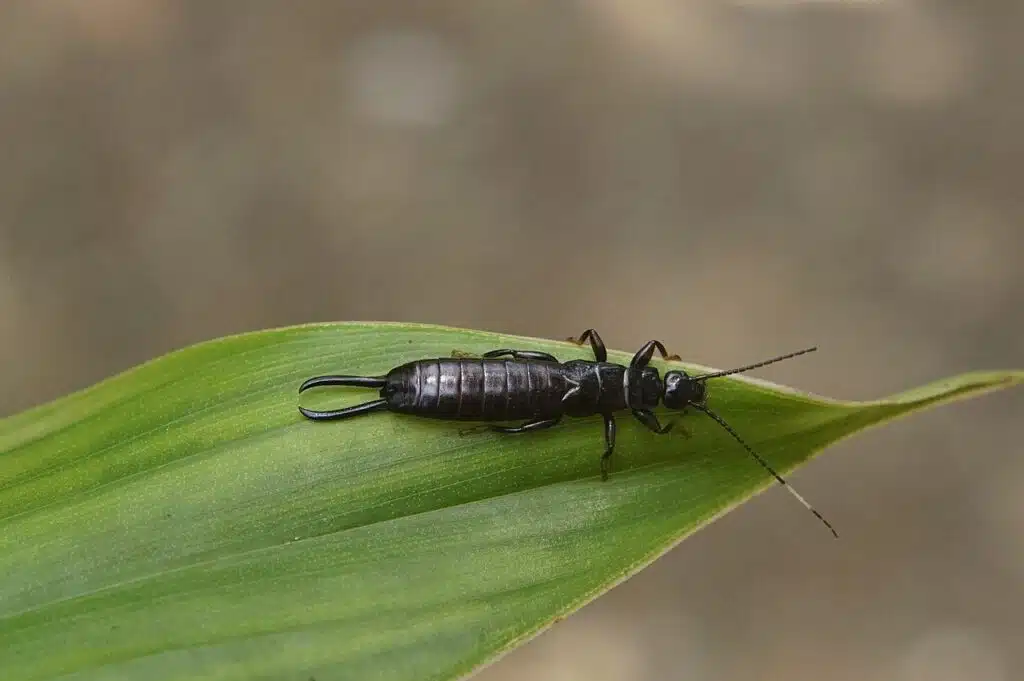
They are nocturnal and will hide in crevices during the day. They come out at night where they feed on plants and insects. They are known to cause damage to flowers and foliage, along with some crops.
Earwigs spray a foul odor from their scent glands to protect them against predators. They will also use their pincers for defense. They are also known to create swarms and take over areas of a district, which was seen in 1755 when they appeared in swarms in Gloucestershire, England.
2. Silverfish – Long Black Bugs in Bathroom

Silverfish are small, wingless insects that are a sliver to gray color. They have a fish-like appearance when it comes to their movements. They live on starches and sugars and can be found throughout the world.
They can grow to 25mm with a tapered abdomen. When they are newly hatched, they are white and develop into a metallic gray with age. They are wingless with long antennae. They move in a wiggling motion. They can regenerate their antennae and terminal filaments.
The silverfish has a long lifespan of three years and can be found in Africa, America, Australia, and parts of the Pacific. They prefer moist areas with a relative humidity of up to eighty-five percent. They are often found in basements, attics, bathrooms, kitchens, and showers.
3. Centipedes – Long Black Bugs in Basement

Centipedes are predatory anthropods and are multi-legged insects. They have an elongated body, broken into segments. Each segment has a pair of legs.
They are venomous and have a painful bite. The number of legs they have varies from thirty to three hundred and eighty-two, depending on the species. They are carnivorous and can grow from a few millimeters to thirty centimeters.
They can be encountered in caves and in homes. They are boring in color, usually a red or brown shade. There are approximately eight thousand centipede species in the world, of which only three thousand have been described.
You may encounter them under leaf litter or dead wood, they are sometimes found inside logs and under stones.
Some species are considered dangerous to humans, due to their venomous bite. It is not only painful, but also causes severe swelling, weakness, fever, and chills. While the bite is not considered fatal, it can be more dangerous to younger children, and anyone who is allergic to bee stings.
4. Millipedes – Long Black Bugs with Lots of Legs

The millipede is an arthropod with two pairs of legs that are located on most of its body segments. The segments have double legs and often are two single segments, fused together. They have elongated bodies, which comprise of at least twenty segments. They can usually roll up into a ball if they feel threatened.
There are more than twelve thousand species in one hundred and forty families throughout the world. They are slow-moving and feed on decaying plant matter and leaves. They are considered harmless to humans, though they are considered household pests.
You can encounter millipedes throughout the world, except in Antarctica. They are usually found in leaf litter, soil, dead wood, and other humid areas. It’s not uncommon to find them in the home.
5. Click Beetles

Click beetles are also known as snapping beetles, skip jacks, and spring beetles. They are cosmopolitan beetles. They use their “click” to avoid predators, and when they need to right themselves after landing on their backs.
There are approximately nine thousand species throughout the world, of which nine hundred and sixty-five can be found in North America. Some species are large and colorful, though the majority are less than two centimeters in length. Most of these beetles tend to be black or brown.
This is a nocturnal beetle and they are not dangerous to humans. You may encounter them on a hot night coming into the home.
6. Rove Beetles
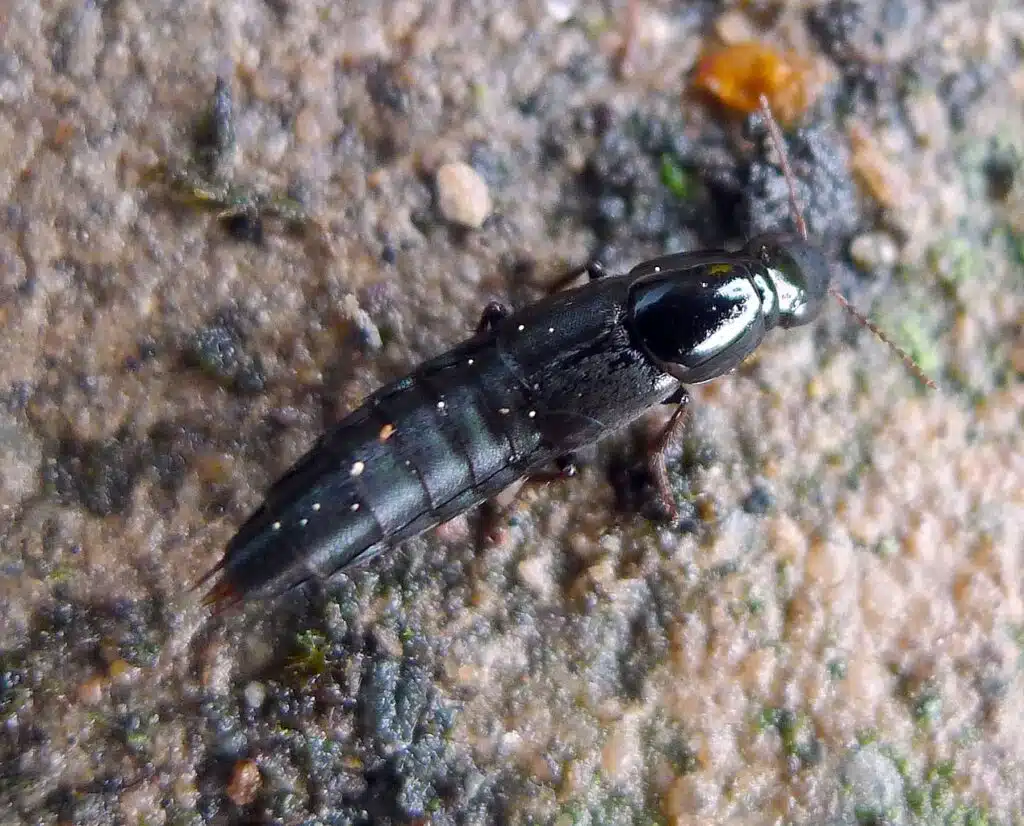
Rove beetles have short wings, leaving more than half of their abdominal segments exposed. There are more than sixty-three thousand species in the world, making up a diverse group of beetles.
Due to the vast number of rove beetle species, they are very diverse with a lot of variation among them. They can range in size up to 35mm. They are elongated, though some are more oval in shape.
Coloration varies from red/brown to black, and some are blue and green.
7. Springtails

Springtails are modern hexapods and are omnivorous, and feed on free-living organisms in moist areas. They are contributors to organic matter decomposition. They are commonly found in leaf litter and decaying materials.
In woodlands, leaf litter, and vegetation you may find up to forty different Springtail species. In tropical areas, this number can rise to more than one hundred different species.
8. Termites – Long Black Bugs on Ceiling
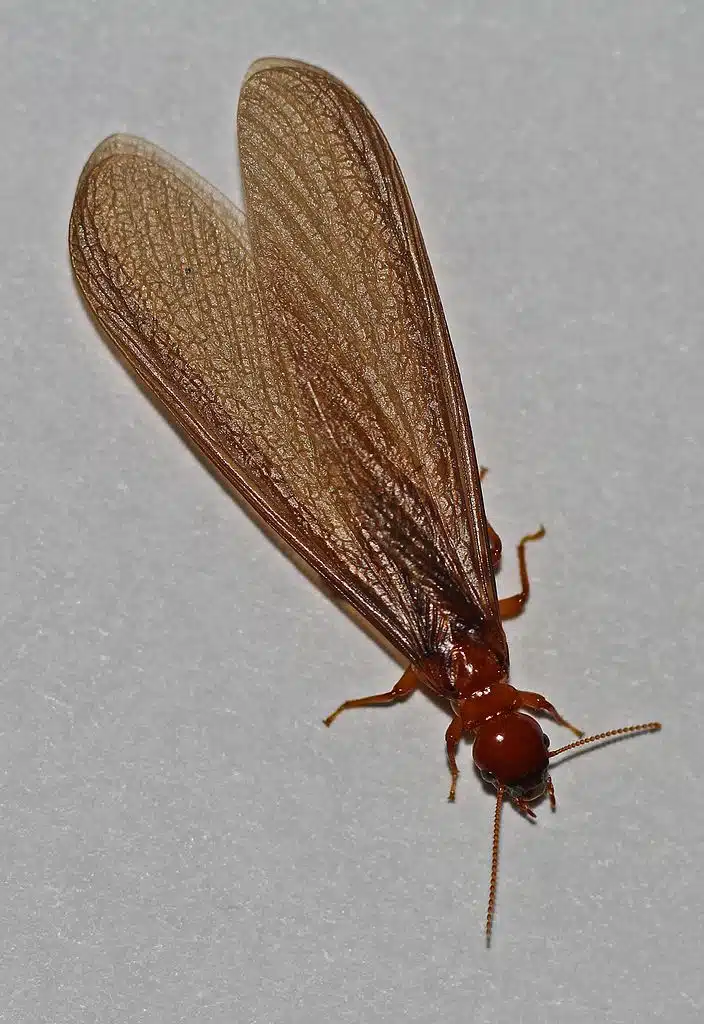
Termites live in colonies and feed on wood and dead plant matter. You can encounter these insects everywhere in the world, except in Antarctica.
It is believed that the termite first originated in the Late Jurassic times and there are more than three thousand species described.
The termites are similar to wasps, bees, and ants. They also have their workers and soldiers. The colonies have fertile males and one or more queens. A single colony can range from a few hundred termites to millions. The queen has the longest lifespan of any insect, and it is believed that they can live up to fifty years.
Termites are considered traditional medicine in some cultures, but the majority of the time they are considered pests. They are known to cause serious damage to crops, plantation forests, and buildings.
They are not large and can grow up to around 15mm. Most of them are blind and do not have eyes. Other species have compound eyes, which are used for orientation. Some are winged.
9. Scorpions

Scorpions are predatory arachnids with eight legs. They are easily recognized for their grasping pincers and their narrow tails. The tail curves over towards the back and ends with a stinger. They are more common in desert areas, though they have adapted to a wide range of environments.
Scorpions can be found throughout the world except in Antarctica, with more than two thousand five hundred different species in twenty-two families. They prey on insects and other invertebrates. Their pincers are used to restrain and kill their prey.
The stinger on their tail can be used for defense and offense. Most of them are not a serious threat to humans and a healthy adult should not require medical treatment after being stung. There are twenty-five species that are capable of killing a human.
10. Crane Flies – Long Black Bugs That Fly

Crane flies are flying insects and can be encountered throughout the world. They are more common in the tropics and at high elevations. There are more than fifteen thousand different species of crane flies.
Adult crane flies look like large mosquitoes. They have a slender body with a large wingspan of around 65mm. They have nineteen segments on their antennae and a V-shape on the back of their thorax.
11. Robber Flies

Robber flies are distant relatives of the common house fly. They sometimes appear frightening. They are large and hairy. They are known to inflict painful bites.
They do assist in eradicating harmful pests in the garden, including wasps, white grubs, and grasshoppers. These flies can grow to 30mm in length. You will often find them hanging around plants looking for prey. They fly just above the ground.
There are more than one thousand species in the United States. They do prefer sunny areas, such as deserts. Though some species will live in forests and woodland habitats.
12. Ichneumon Wasps

The ichneumon wasp is a parasitic wasp with more than twenty-five thousand species described. They are important in regulating insect populations. These wasps are yellow and black and do not have an ovipositor.
They prefer temperate zones, rather than the tropics. They have a slender waist, a pair of compound eyes, three ocelli eyes on the top of their heads, and two pairs of wings. They can vary from a few millimeters to over a centimeter in size.
13. Water Scorpions

Water scorpions are aquatic insects, resembling a scorpion. They have raptorial forelegs, which look like pincers, and the end of their abdomens resemble a tail. They will not sting, but they can inflict a painful bite. Their bites are not harmful to humans.
They can be found throughout the world, except in Antarctica. They prefer stagnant and slow-moving water, including ponds, canals, streams, and marshes. They have red abdomens, hidden hind wings, and open fore-wings.
They have broad and flat abdomens and they crawl on aquatic vegetation. Interestingly, they are not good swimmers. They can grow up to 60mm in length.
14. Stick Insects
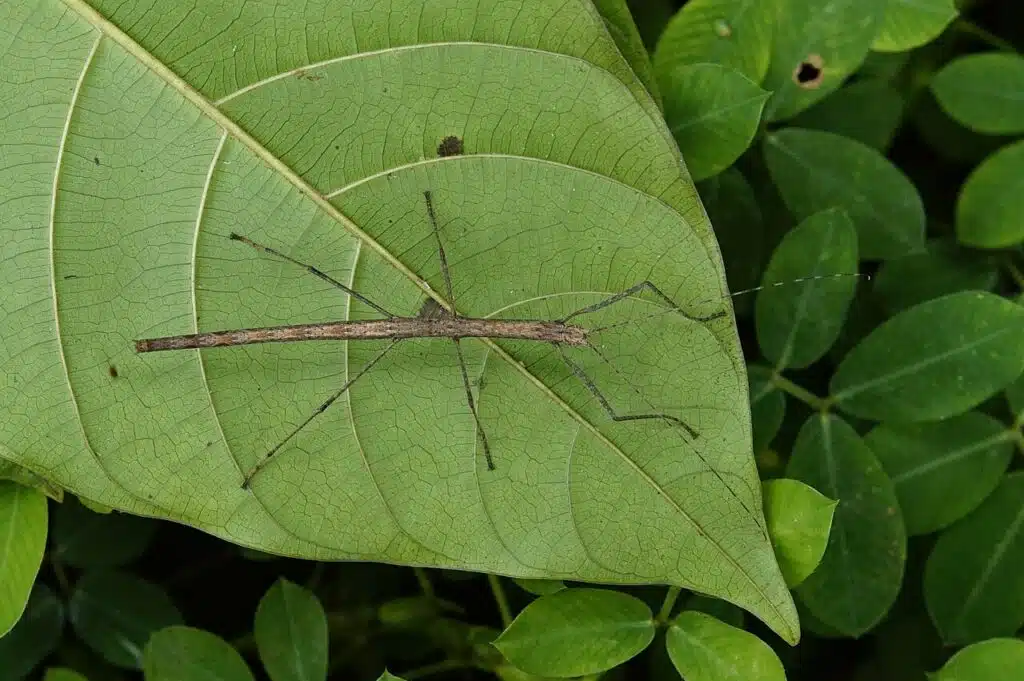
Stick insects, known as stick bugs, stick animals, bug sticks, and walking sticks. Their natural camouflage makes it very difficult for any predator to detect them. Some have toxic secretions, startle displays, and spines that are used to defend themselves.
They are one of the longest insects in the world and can be found throughout the world, except in Antarctica. They are more abundant in the subtropics and tropics. Being herbivores, they often spend their time in a tree canopy.
They are large and can grow from 15mm to 25 inches, or 630mm in length. Most are cylindrical and stick-like in shape, while others are leaf-like, or flattened in shape. Most are wingless, or they have reduced wings. They have long thorax and compound eyes with an impressive visual system.
Stick insects have sticky pads on their legs, which create friction at low pressure. This enables them to grip easily. They can be encountered throughout the world, except in Patagonia and Antarctica.
The largest number of stick insects can be found in Australia, the southern United States, and Central America. Borneo is home to more than three hundred stick insect species.
15. Praying Mantis

The praying mantis is the largest family in the Mantidae. There are over two thousand four hundred species in thirty-three families. They are encountered throughout the world in tropical and temperate climates.
The praying mantis is easy to identify with its triangular-shaped head, bulging eyes, and flexible neck. They have elongated bodies, some species have wings. All species have enlarged forelegs, which are adapted to help them grip their prey. They are often seen in an upright position, staying completely still, and their forearms are folded.
The mantis is closely related to cockroaches and termites. They are often confused with stick insects. They ambush their predators, with ground-dwelling species pursuing their prey. They have a one-year lifespan.
The female is known to eat the male’s head after mating. They were also considered to have supernatural powers in earlier civilizations. They are also commonly kept as pets.
16. Mole Crickets
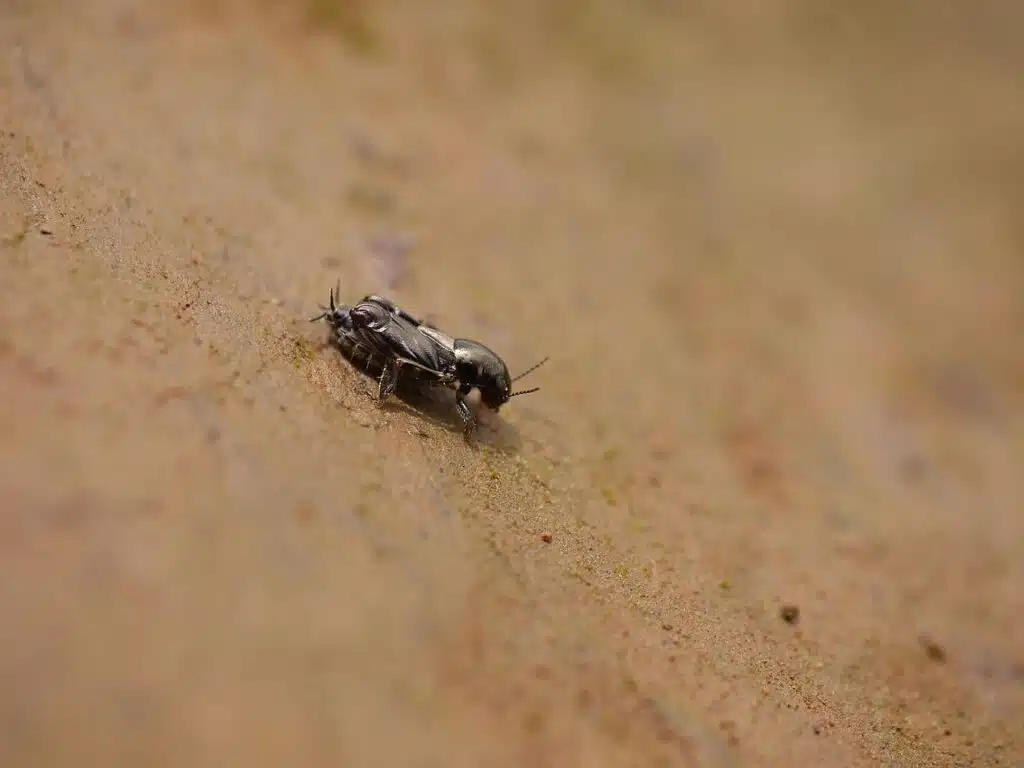
Mole crickets have cylindrical-shaped bodies. They grow to around 50mm in length with small eyes and shovel-like fore legs, which are used for burrowing. They are found throughout the world, where they have become agricultural pests.
They spend most of their lives underground. The adults do have wings and will disperse in mating season. Their diets vary based on the species, some feed on plant roots, others feed on worms and grubs.
The males have a loud song, which they sing from their burrows. The song is used to attract females, showing them a favorable place to lay eggs. They are believed to bring good fortune in Zambia, while they are believed to predict rain in Latin America.
They vary in size and typically grow to around 35mm as adults. Their bodies are covered in dense hairs, helping them spend their lives underground. They have beady eyes and two thread-like antennae. Their wings are folded over their abdomen.
17. Long-Necked Seed Bugs

The long-necked seed bug is found in North America. They are often confused for the brown stink bug, which is an invasive species from Asia. They feed on plants and do not cause harm to humans.
They belong to the Rhyparochromidae family and have two generations each year. They feed mostly on cotton plant seeds, strawberries, and others. They are pale brown or black in color and are often seen flying towards the light at night.
18. Long-horned Beetles
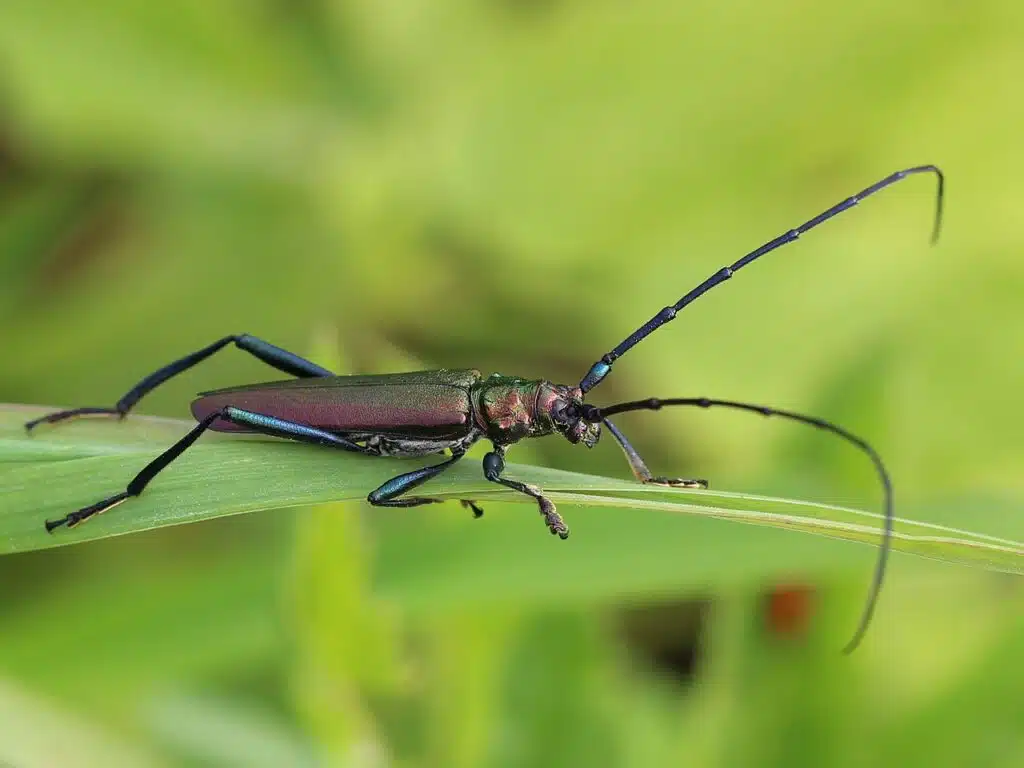
Long-horned beetles are a large beetle family with more than thirty-five thousand species described. They have long antennae, often longer than the body.
They vary in color, shape, and size. The titan beetle, which is part of this family, is considered the largest insect, growing up to 167mm in body length.
19. Camel Spiders
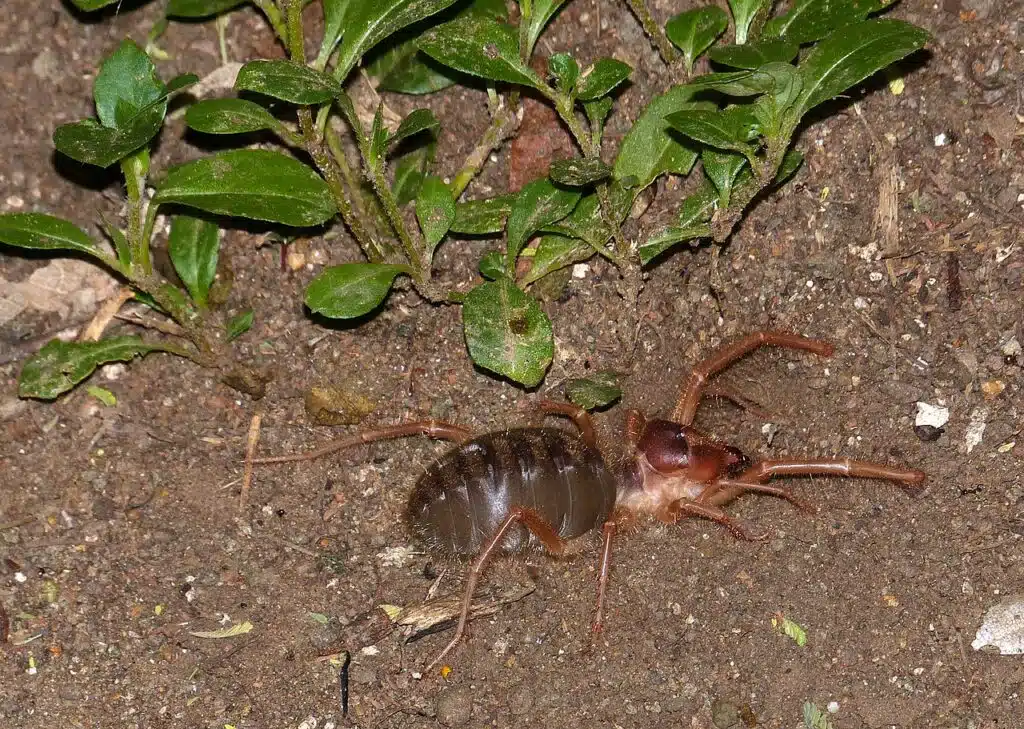
The camel spider is an arachnid, also known as wind scorpions, solifuges, and sun spiders. There are more than one thousand species described. Most live in dry climates and feed on small animals and ground-dwelling arthropods.
They can grow up to 150mm in length, which includes the legs. They are fast and are not dangerous to humans. They are large, tan, and hairy. They look scary with their heads coming to a point. Their jaws are used to catch prey. Their jaws are one-third of the spider’s body length.
They are common in the Middle Eastern deserts but have been encountered in Mexico, and the southwestern United States. They are nocturnal and hide from the sun. Being carnivores, they enjoy a diet of lizards, rodents, small birds, and other bugs.
They are not venomous. They seize their prey with their jaws, chopping it up. They use their digestive fluids to liquefy their victim, sucking out the remains.
20. Stilt Bugs
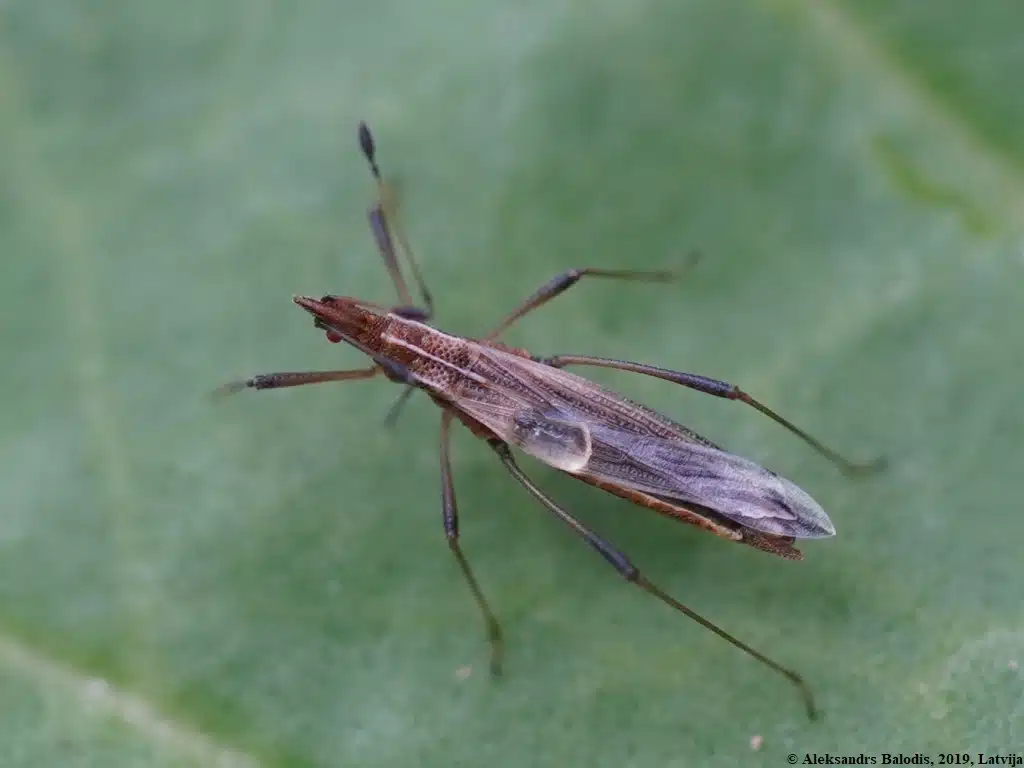
Stilt bugs are also known as thread bugs. They are brown to yellow with two hundred species described around the world.
These bugs have long and slender legs. They also have long and slender antennae with a very little swelling at the tip. They have a forward-facing protrusion between the antennae. Their wings have five veins with some species having a protrusion from the fore-wing base.
Most of the silt bug species have toothed claws or a split on their legs, which allows them to protect themselves, also helping them stick to surfaces. They are opportunistic scavengers, often feeding on plant sap.
While they are not dangerous to humans, they can give a painful prick.